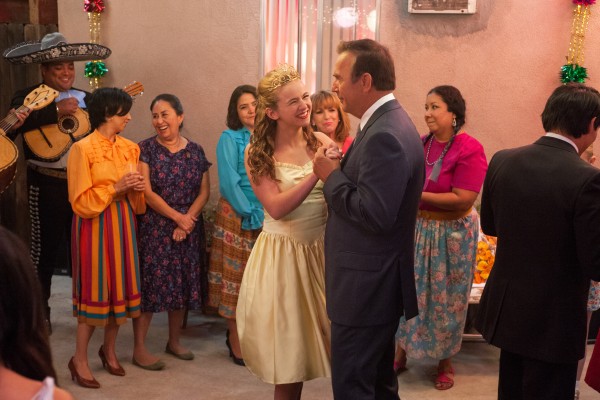It’s been a long time since Kevin Costner showed up in a worthwhile movie. Not nearly as long, though, as it’s been since a real Central Valley farming town appeared in one.
They both star in a movie that I saw recently at Walt Disney Studios called McFarland USA, which portrays a kind of unvarnished rural America that amounts to risk-taking I don’t associate with either Costner or Disney.
McFarland USA (in theaters later this month) is based on the true story of Jim White, a football coach who moves to the tiny Central Valley farming town in the 1980s and, instead, creates the McFarland High School cross country team with kids who work the field before coming to school, the children of longtime farmworkers.
The team becomes state champions – a feat the school has achieved nine times. McFarland USA is great tear-jerking sports filmmaking.
For Costner, this comes after a series of movies that seemed to me (though I’m no Hollywood insider) the last gasp of a major career (Draft Day), and may help resuscitate it.
He’s played this part many times. This time, though, he allows himself to be here in all his wrinkles, befuddled a good part of the movie in this foreign land with a U.S. zip code; he’s no longer quite the stud in control that he was during his heyday that began in rural America with Bull Durham in 1988.
Costner deals in fantasy, like every movie star. His has always been a certain kind of American (usually male) fantasy, and often about the nobility of white rural and/or small town America, in particular. Bull Durham, which launched him, had it in spades.
Problem is that part of America has been taking a pounding since at least Bull Durham (farm crisis, depopulation, Walmart). (The latest scourge, about which I’ve been writing, is a locust cloud of prescription pills and heroin.)
It’s the unblinking (within the genre’s limits) look at this rural America into which Costner is thrown that makes this flick worth the time. One place is a cabbage field, in which Costner stoops under the brutal Central Valley sun along with Mexican farmworkers. This is an unfamiliar country for the guy whose last appearance in modern rural America was in the far less complicated Field of Dreams Iowa in 1989.
The movie’s backdrop is its richest attribute: the orchards and streets of the Central Valley, home to some of our poorest towns – McFarland among them. “Are we in Mexico?” his daughter asks as the White family first drives through town.
Embracing this milieu allows the movie, and the star, a few other surreal scenes.
There’s Costner as a proud but stumbling father giving his daughter an impromptu quinceanera, a word he cannot pronounce. Another shows the kids training by running around the local prison – doesn’t every Valley town have one?
McFarland USA is Disney through and through. You’ll whiff Stand and Deliver, as well as Rudy and Hoosiers. It’s still effective filmmaking – I counted five tearing-ups – with a poor, stunningly photogenic, Central Valley town at its center.
We learn that all White’s runners go on to better lives, many, it seems, working for one level of government or another.
That’s not surprising any more.
The Central Valley has inspired thunderous works of art and activism on the plight of the oppressed – Grapes of Wrath, of course, the main example. But none ever stuck with the story long enough, I always thought. For, by and large, people don’t take it lying down for long. They struggle. They move on, they move up; in time, they’re allowed the luxury of forgetting where they came from.
Had Steinbeck followed the Joads, he’d have watched their kids become the next generation of cops and city councilmen along the 99 – and forget their manners when it came to the Mexican-Americans who moved up the highway to take their places in the fields.
I lived in Stockton from 1989 to 1992 – about the time McFarland USA is set. By then, the kids of those Mexican-Americans that Cesar Chavez organized in the 1960s had become cops, restaurant owners, and farmers themselves – and didn’t seem to care too much for the illegal northern Mexicans who worked the fields.
Those northern Mexicans who came to pick in the 1970s and 1980s were amnestied into America. Their kids are today the labor contractors and farmers (and cops). They’re trying to figure out the newest pickers – Mixtec and Triqui Indians from southern Mexico – who seem as foreign to them as his students seemed to Jim White when he showed up in McFarland fresh from a failed Idaho coaching job.
But all that is backstory to a movie that combines some classic sports melodrama with a look at a rural, small-town USA, and, with it, an icon of square white American manhood cutting cabbage in the sun.
Photo: McFarland USA





